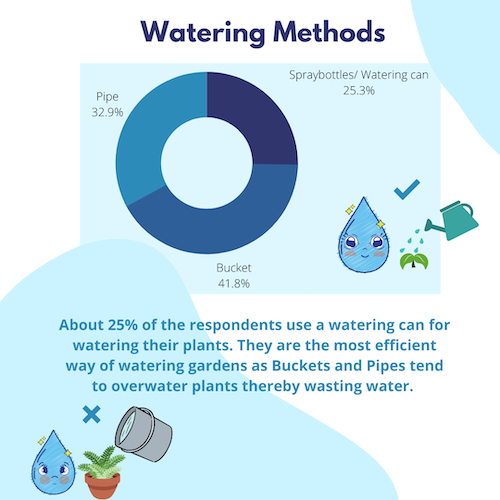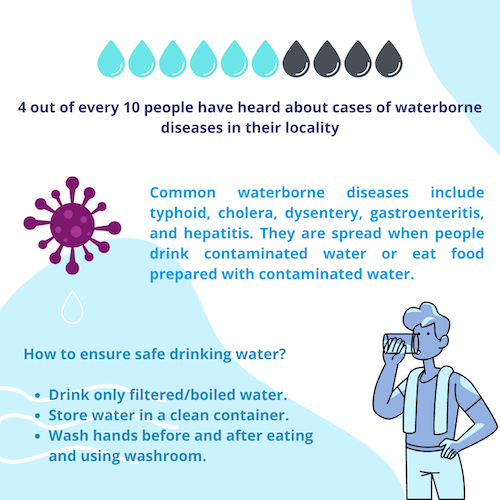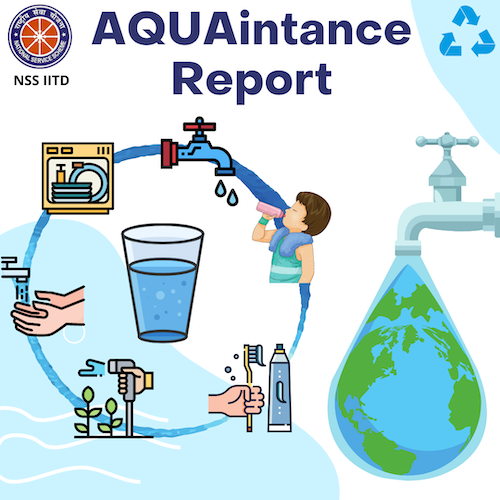AQUAintance Survey
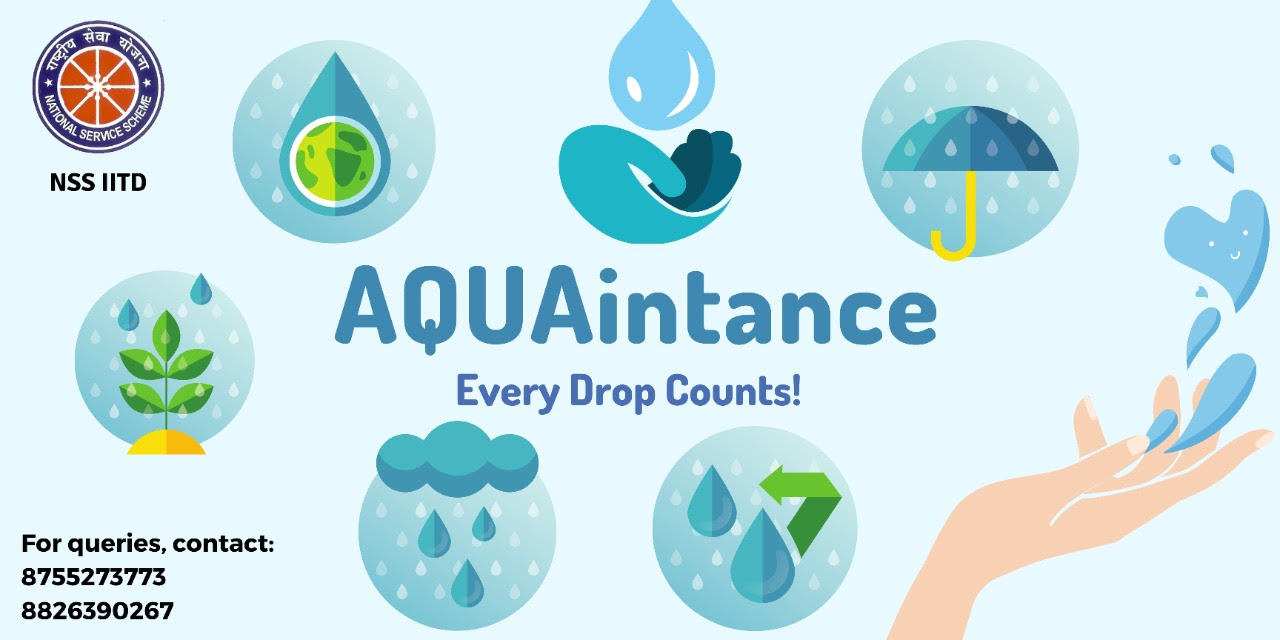
Key insights collected from the data obtained are as follows:
1) Nearly 75% of the respondents have a perennial/few disrupted water supply. Even though the onus of conserving water lies on everyone equally, we noticed that people with a limited water supply tend to use it more judiciously, although a large number of people hear about water conservation quite frequently. This attitude of people has to be changed. Spreading awareness is important but without implementation, there will be no use of it. Change begins from one’s home. If all global citizens pledge to use water in a sustainable manner, irrespective of whether they have a perennial or disrupted supply, then we can easily meet our current need and also save water for the future generations. We must always remember that “We have not inherited this earth from our forefathers, but borrowed it from our children”.
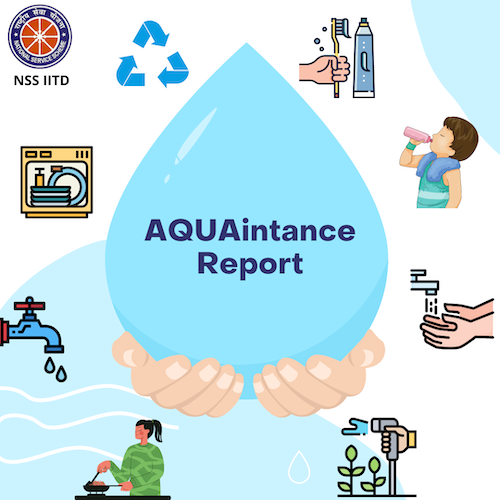
2) About 52% of the respondents do not reuse water ejected from appliances like ACs and RO purifiers. This water may not be suitable for drinking or bathing, but using it for other purposes like mopping, watering plants, and washing vehicles can save gallons of water everyday. Some other innovative ways to reuse this water are:
- Use it in toilets. Toilets use around 1.6 liters of water in each flush. This can be minimized by reusing RO/AC water for this purpose.
- Using RO rejects in coolers during summers. Salted water damages cooler fans and motors and makes them rust faster. Using RO reject (purified water) will thus serve a dual purpose here.
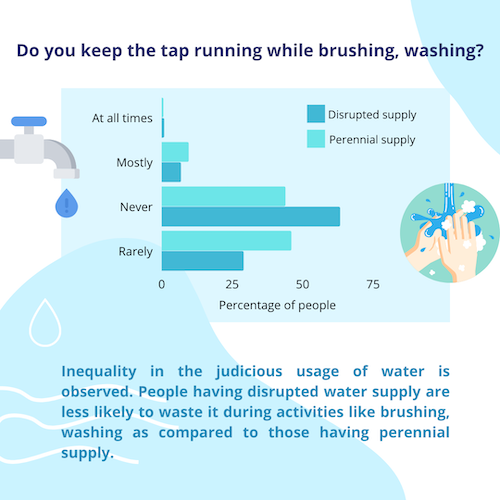
3) Majority of the respondents use water pipes or buckets to water plants. These methods sometimes lead to overwatering the plants; therefore, spray bottles or watering cans are ideal.
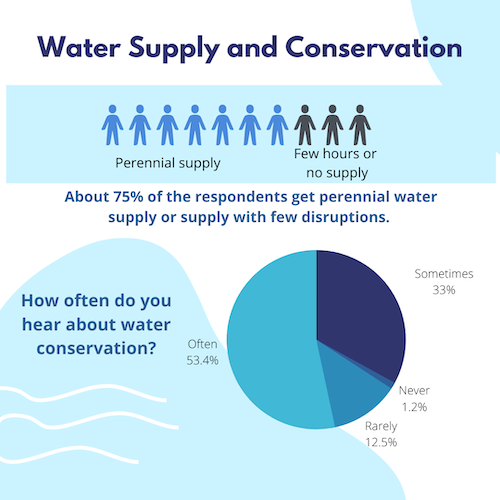
4) A substantial number of the respondents have fallen prey to waterborne diseases. Waterborne illnesses can cause a variety of symptoms. While diarrhea and vomiting are the most commonly reported symptoms of waterborne illness, other symptoms can include skin, ear, respiratory, or eye problems. One should always keep safe from waterborne diseases and in case, someone falls ill one should seek medical help as soon as possible.
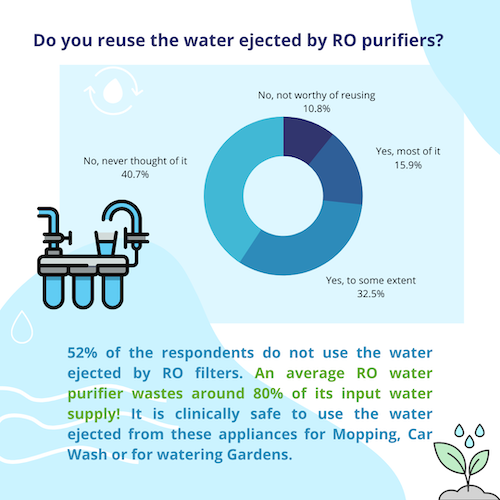
5) It has been observed that most of the respondents are satisfied with the quality of tap water that comes to their residence. 4 out of 5 is the most common rating given to the quality of tap water, with a good number of respondents rating it 5 out of 5.
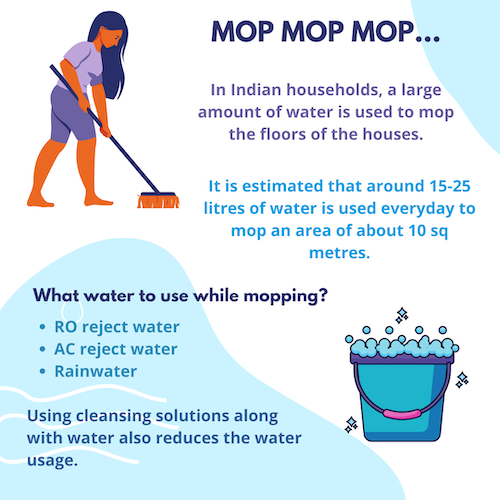
Conducting this survey has provided us some sneak peeks into the lifestyle and everyday water consumption practices of people from the IITD community. We infer that a lot needs to be done in order to ensure that this precious resource is equally accessible by all. With a rising population and increasing needs, we must take steps at both individual and community level to cater for our needs. It is high time we realize our ethical obligations to be good stewards of the planet and responsible trustees of the legacy we will leave to future generations. Let us join our hands to conserve water and make way for a brighter future.
